
For me, summer is a time for small projects … and apparently babies! I have a backlog of about six new babies and a couple whose little one is about to make its debut to knit for. As I get ready for summer vacation I know I have just the thing to keep my needles busy on those long car trips.
I will be leaving soon for what I refer to as “The Grandparent World Tour.” We’ll be heading to the beach in Ocean City, Maryland, then on to Durham, Charlotte, and finally Frederick, Maryland, before we return home. I will be packing no fewer than 10 skeins of The Fibre Co. Road to China Worsted to knit as many of these baby hats as humanly possible. The yarn is warm and incredibly soft — these hats are destined to be heirlooms.
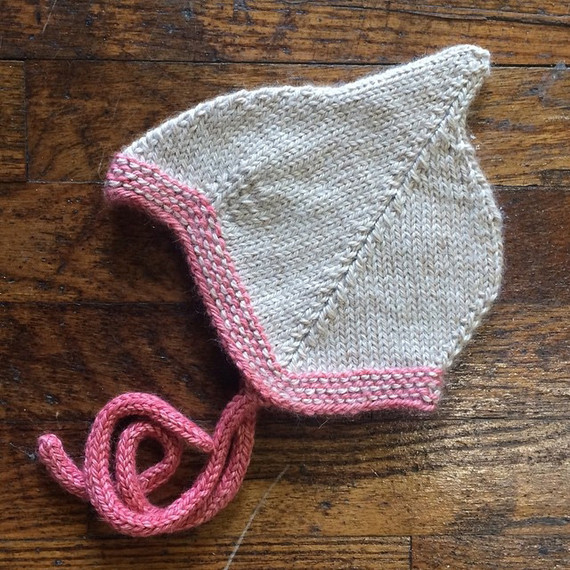
Photography by: Kelbourne Woolens
This little pixie hat is knit using just a little bit of a worsted weight yarn on a US Size 6 (4mm) needle. It is knit in the round, and finished at the top using double-pointed needles. You knit the entirety of the hat (which you can find the pattern for here), and then work two I-cord strands and sew them to the inside of the brim.
What is I-cord you ask? Maybe when you were little you had a neat little toy called a knitting dolly. This may have been a little wooden clown, or soldier, with four nails or hooks coming out of his head and a hollow center. You thread the yarn around these little hooks, then used a small needle or crochet hook to loop yarn through each loop, round and round, again and again. The result was a smooth round cord of stitches, which you could make as long as possible. And, if you were anything like my sister and me, the main goal of this exercise was to see who could make their cord the longest. This type of knitting has been around for at least a hundred years.
Many attribute the term “I-cord,” which stands for “idiot cord,” to Elizabeth Zimmerman, a knitter who revolutionized the way we think about knitting today. According to Elizabeth’s daughter, Meg Swansen, the story goes:
“As a child, EZ had one of those little wooden spools with bent-over nails on the top and she used, laboriously, to make lengths of what was then called Idiot Cord, which she used as reigns when she played ‘horsey.’ Around the late 1950s, Elizabeth found a metal Idiot-Cord machine, which clamped onto a table top that had a handle to spin the ‘spool’ while the little hooks went up and down, extruding knitted cord out the bottom. That was the beginning. Elizabeth figured out how to achieve that knitted cord on two needles and, thinking ‘Idiot Cord’ rather rude, changed the name to I-Cord. Today, most of the I-Cord variations you see so commonly used are directly from EZ’s knitting brain: The list includes I-Cord Cast On and Cast Off, Built-In I-Cord for a lovely selvedge on garter stitch, plus a series of ingenious and beautiful buttonholes….” — Schoolhouse Press
Originally refered to as a “stay lace,” these round knit cords were produced for corset lacings. They were incredibly strong, as knitted fabric tends to be, and were made to replace the laces that were often broken due the constant pulling and strain on the laces.
To work the I-cord is incredibly simple!
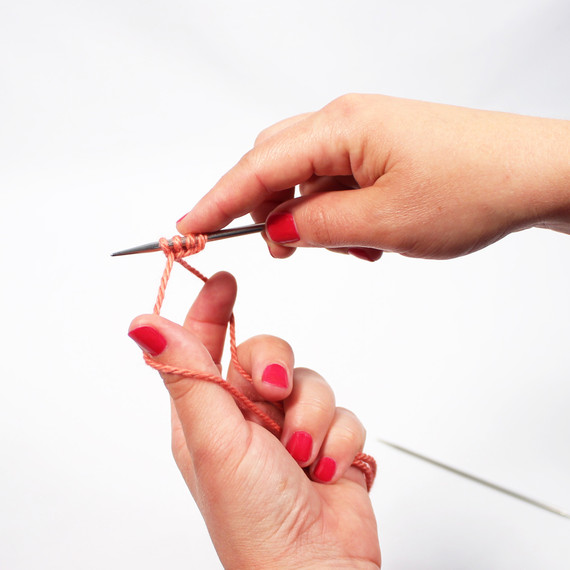
Photography by: Kelbourne Woolens
To start, cast on 4 stitches onto two double-pointed needles. It is important that you use double pointed needles, as you will be sliding the work to knit off of opposite ends.
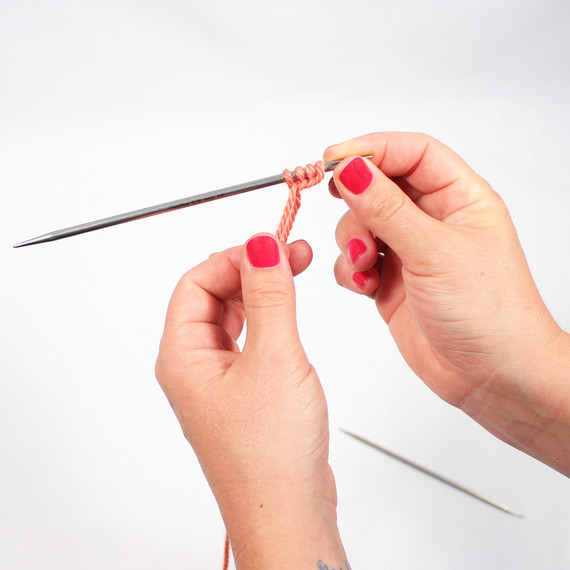
Photography by: Kelbourne Woolens
Then, slide the stitches from the left to the right end of the needle, and follow these three steps:
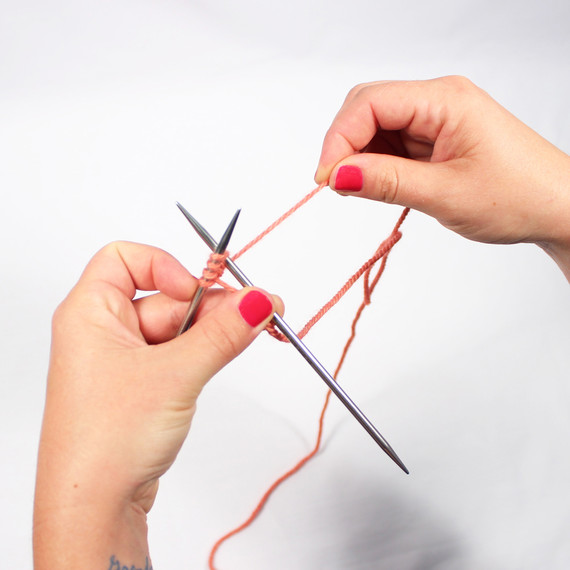
Photography by: Kelbourne Woolens
Step 1:
Pull the working yarn from the left to the right behind the work and hold tightly.
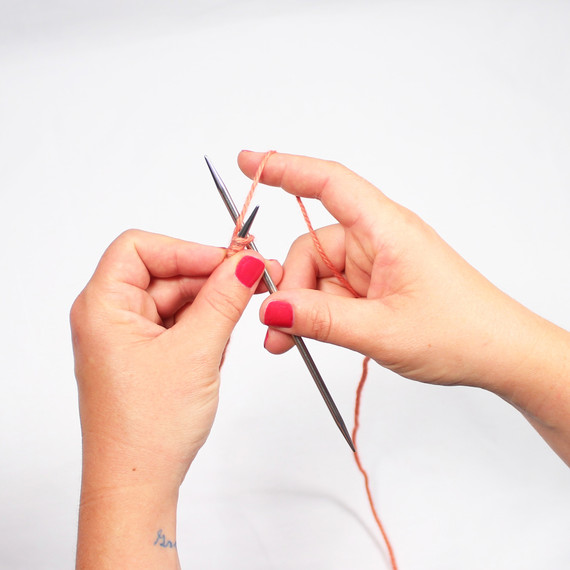
Photography by: Kelbourne Woolens
Step 2:
Knit all stitches.
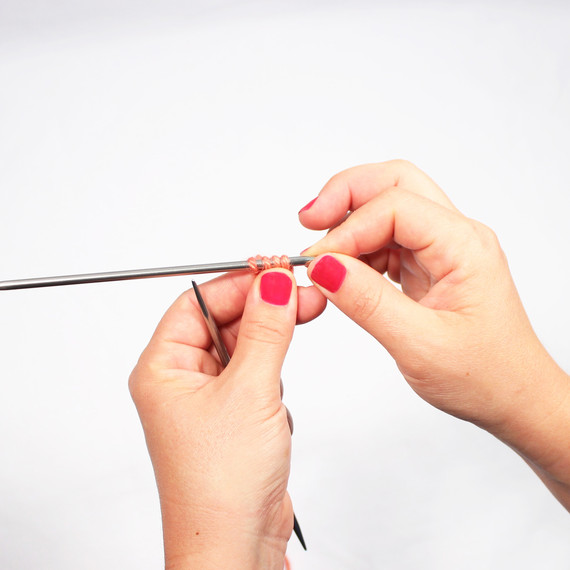
Photography by: Kelbourne Woolens
Step 3:
Slide stitches from the left to the right end of the needle.
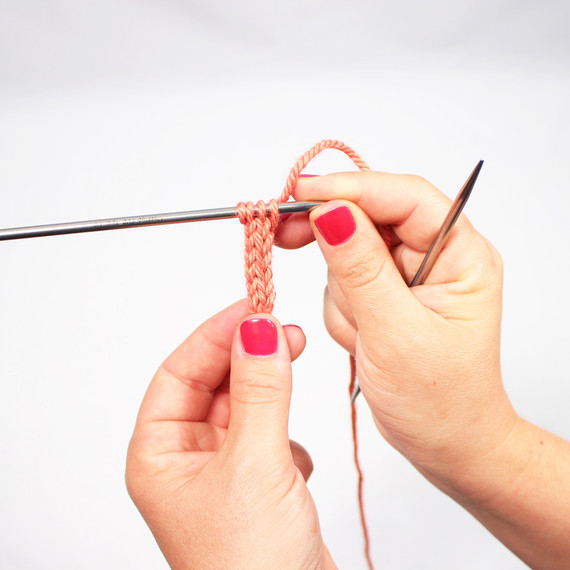
Photography by: Kelbourne Woolens
Repeat!
And that’s all there is to it.
Learn how to knit baby booties by watching the video below!
SOURCE:http://www.marthastewart.com/1119225/knit-i-cord-baby-hat